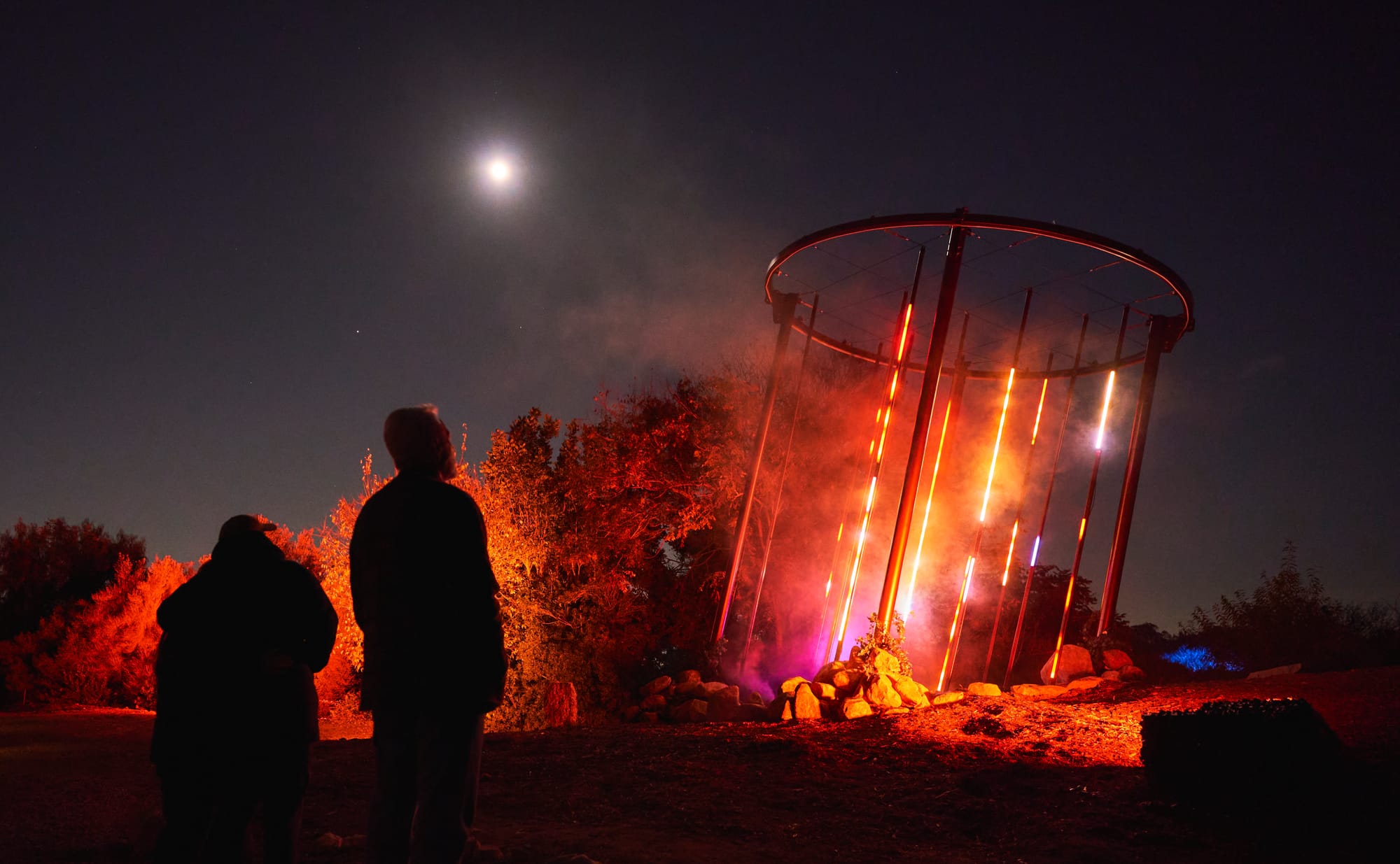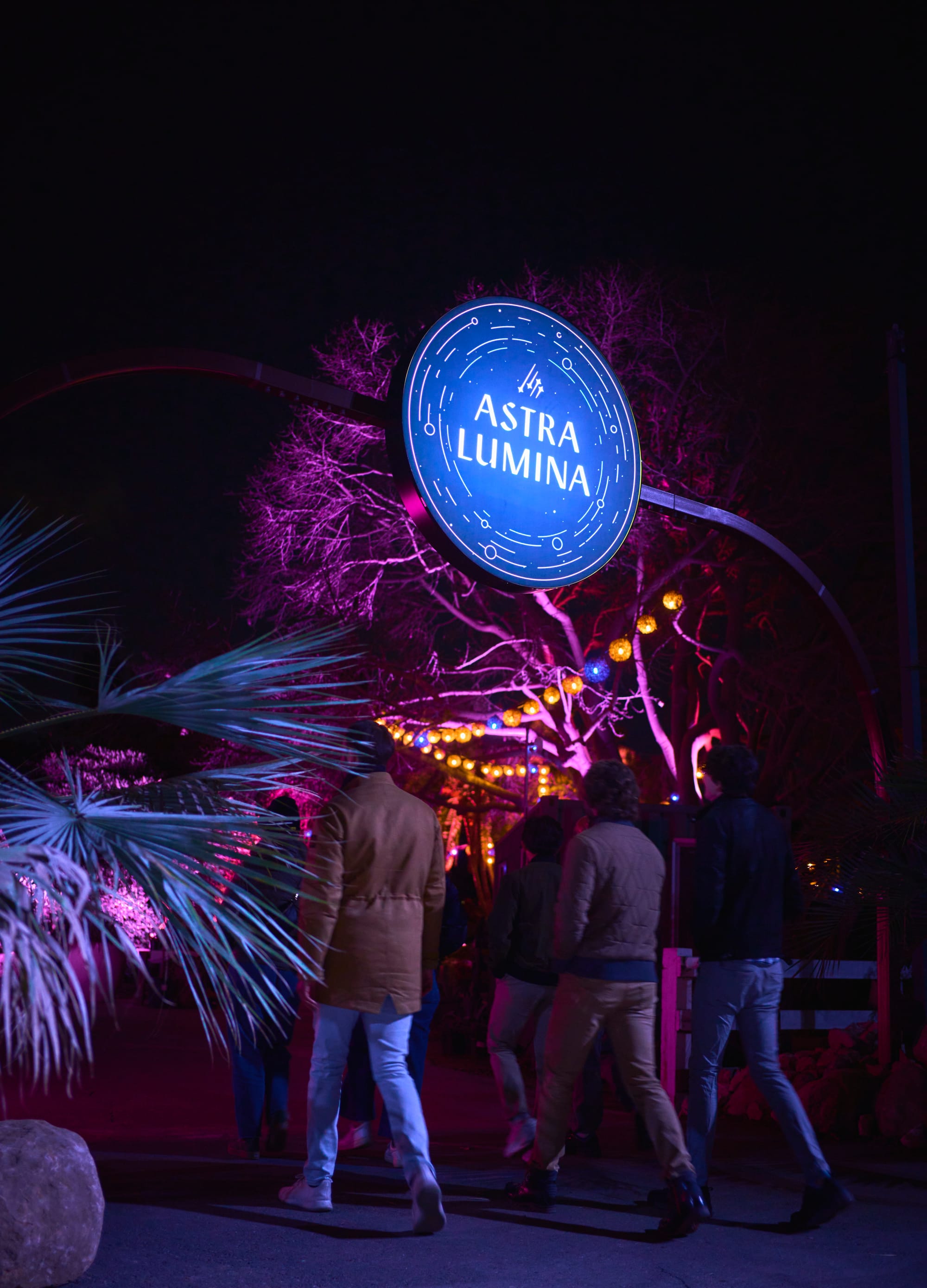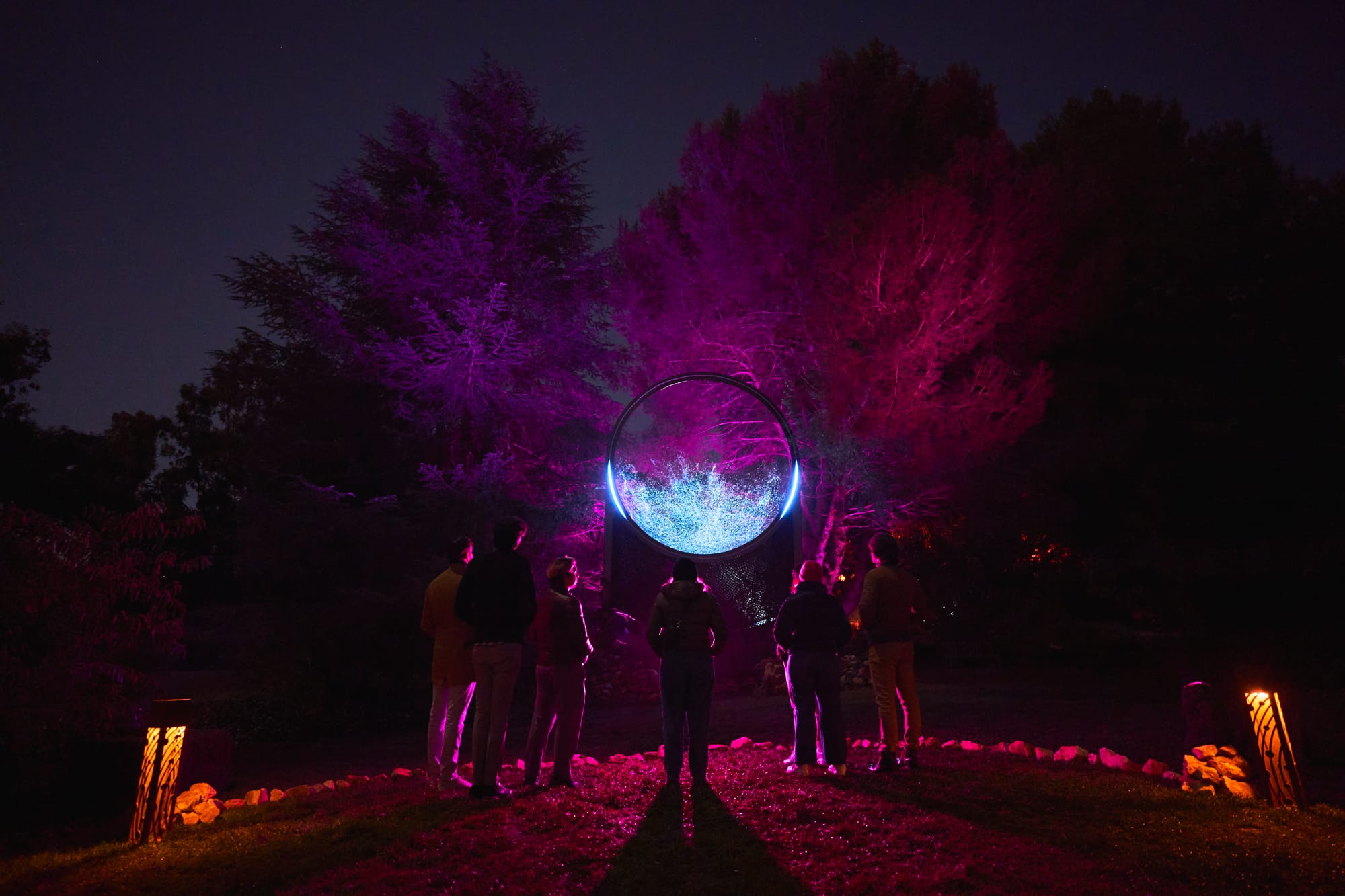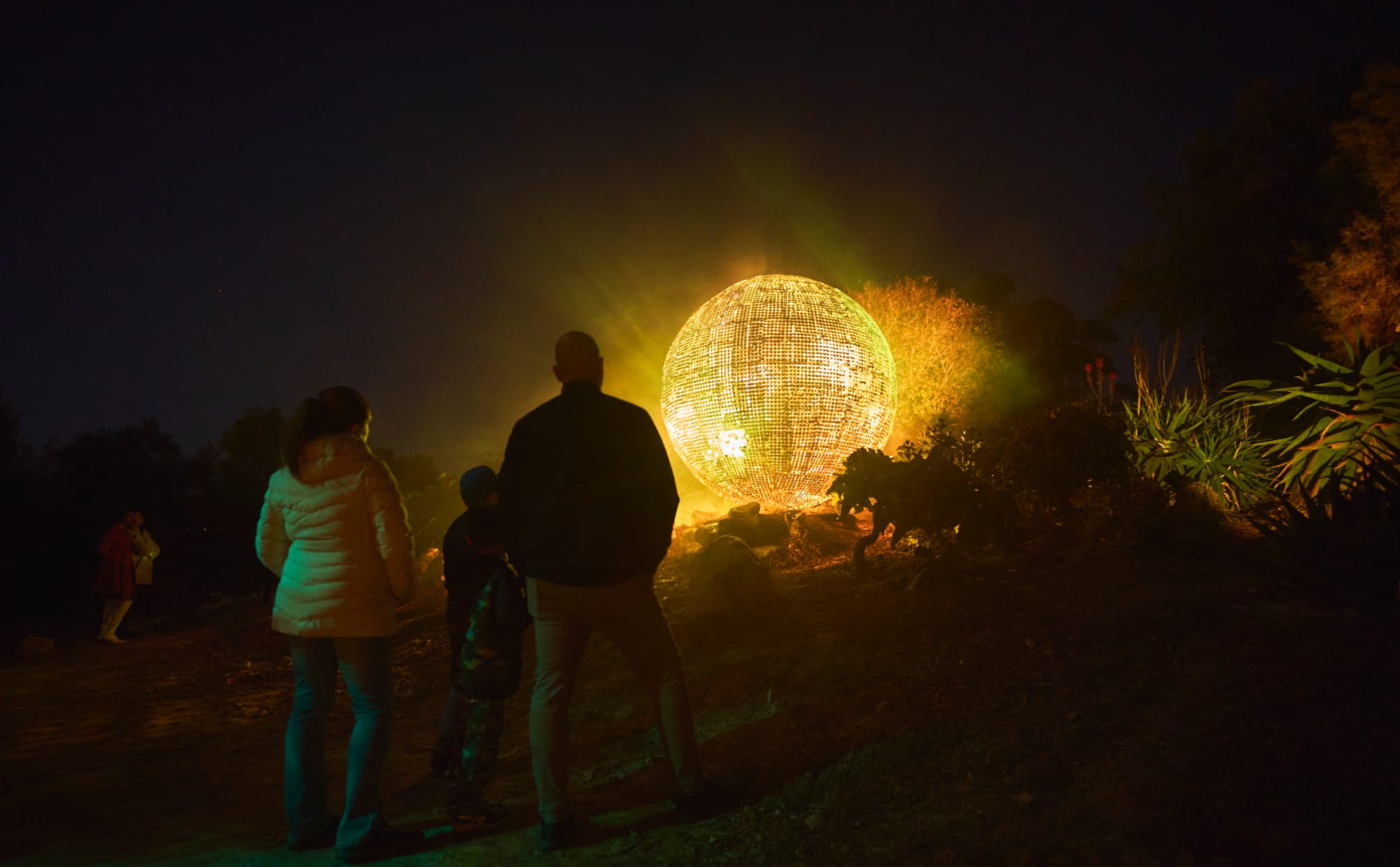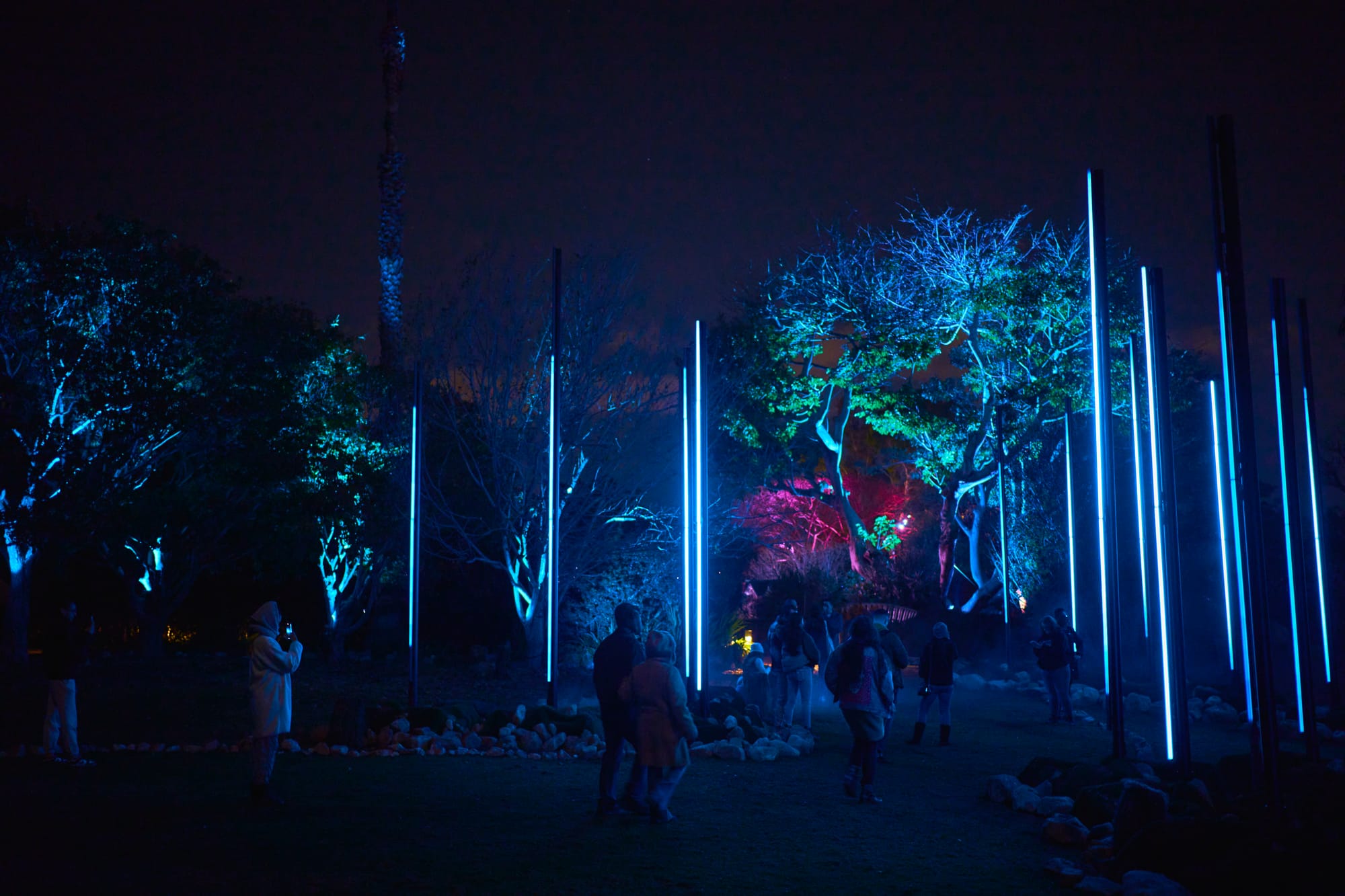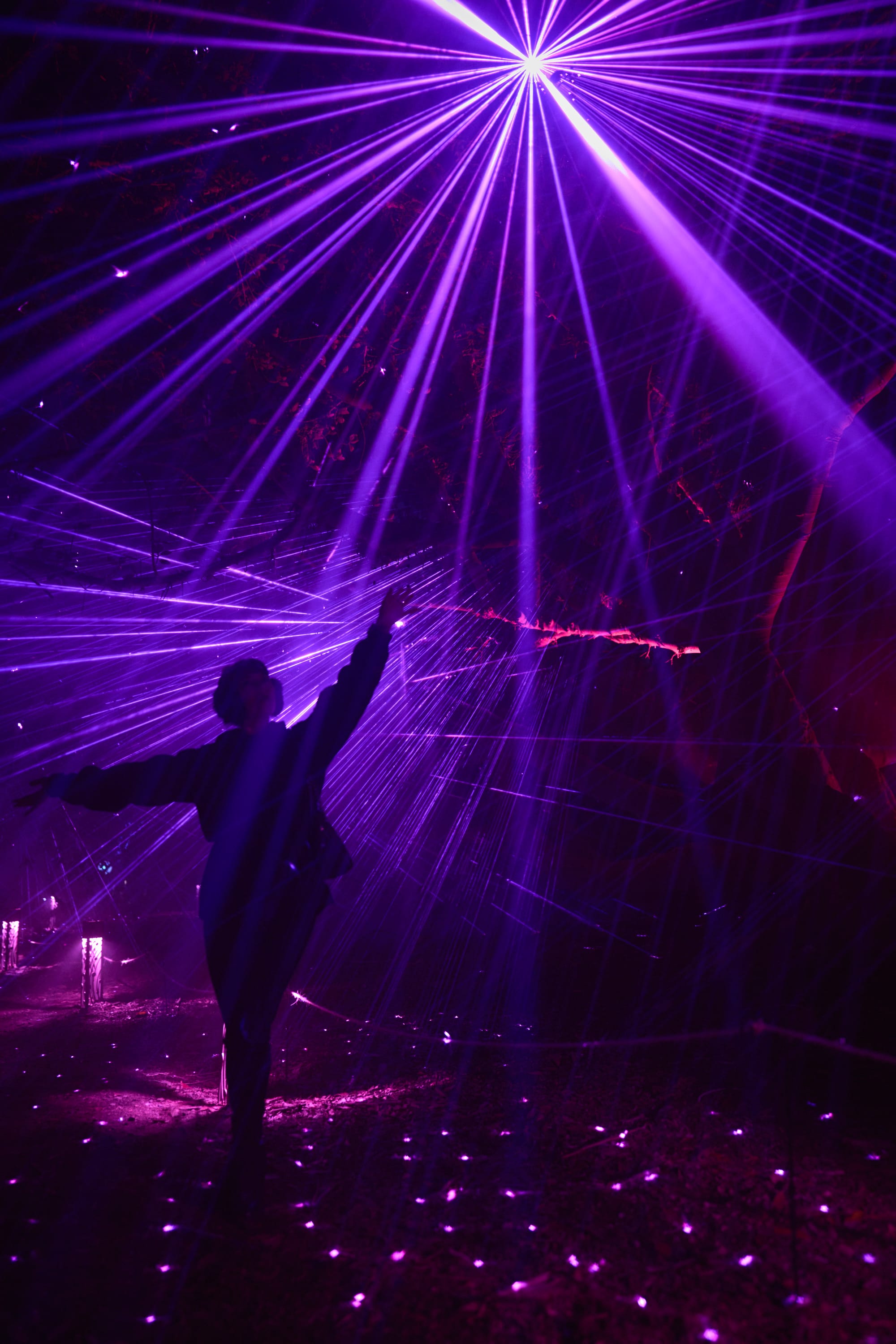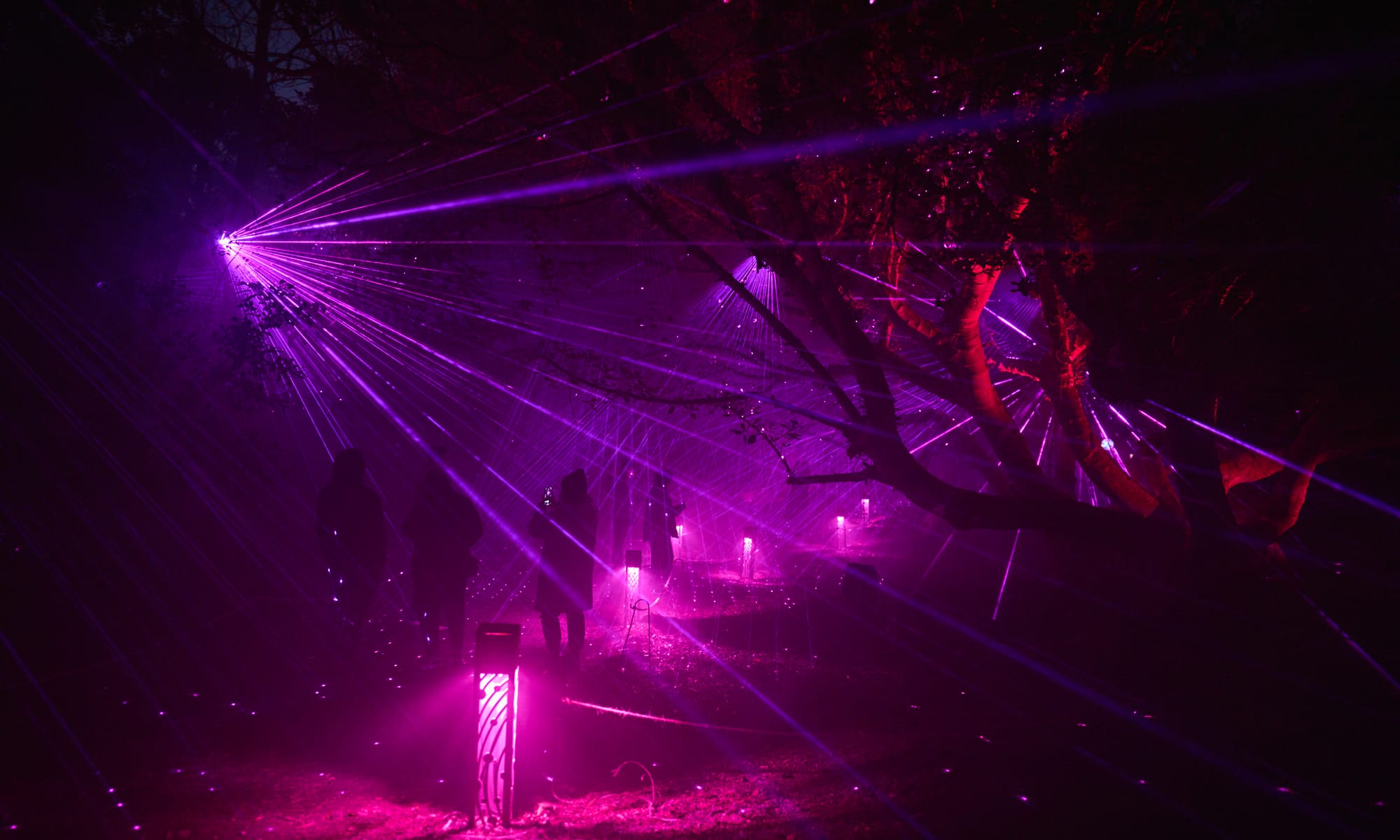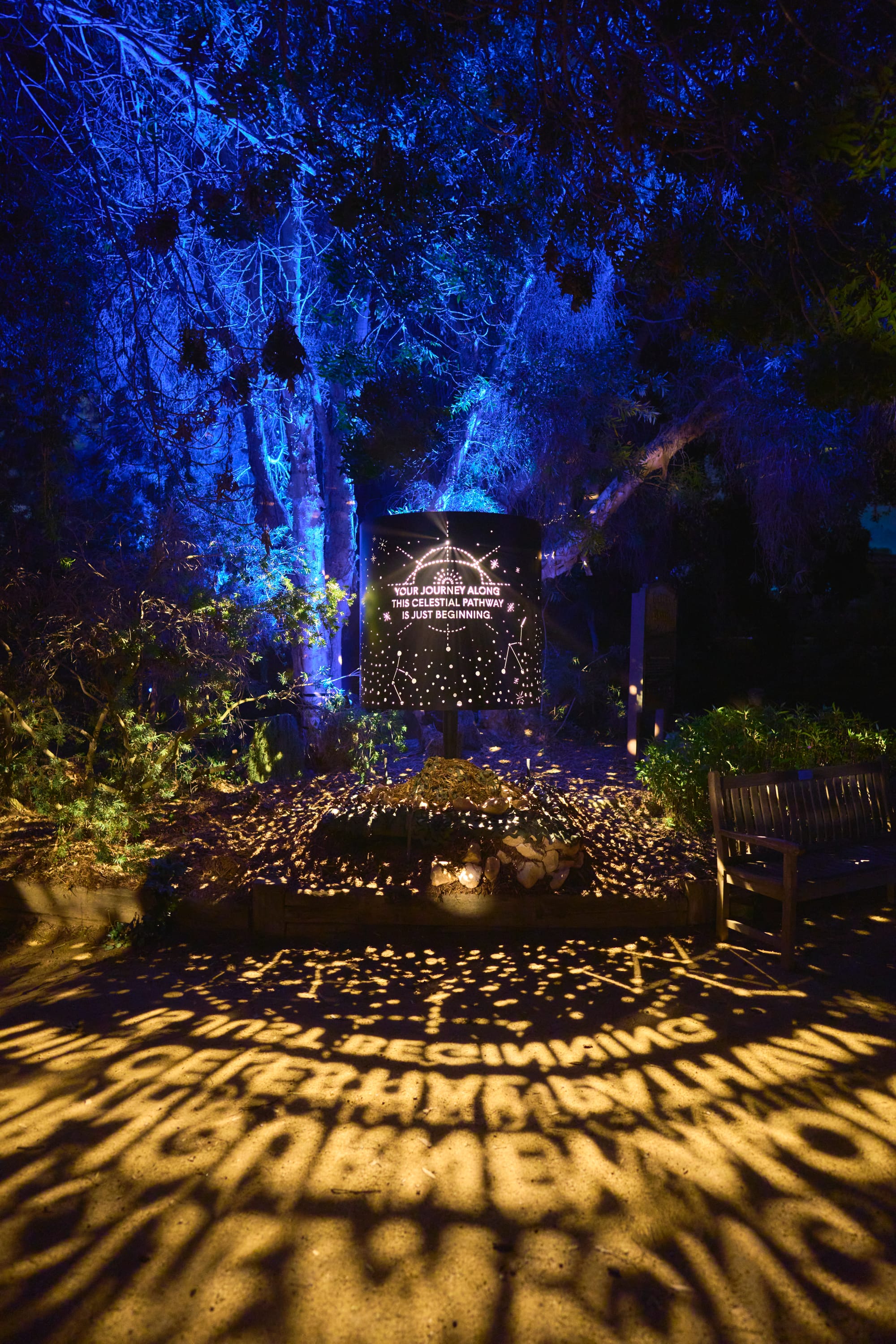Astra Lumina

A peek behind the curtain of
Astra Lumina
We visited the Los Angeles installation of Astra Lumina and spoke with the creators at Moment Factory to learn what's behind the success of their experiences.

The sky is dark. A glow emanates from just ahead. Steam rises in front of the lights. Or is that fog, no, a smoke machine? Soon, the crescent moons reveal themselves, a message beckoning you forward, “what if the stars could reach for us?” At that moment, you know it’s time to rest your logical mind—you’re being taken on a journey through another land, somewhere other than here and now in space and time.
These are the first few minutes of Astra Lumina, the multi-site immersive installation with multiple locations around the world. Astra Lumina is billed as “an enchanted night walk that guides visitors on a journey to discover the wonder of visiting stars. Through the magic of projections, lighting, and music, astral energy transforms the garden into a celestial pathway, connecting visitors to the stars and the vast world around them.”
It comes from the creative powerhouse, Moment Factory, a multimedia studio with a history dating back to 2001. You likely know the name, or at least one of their more than 550 projects, including the Changi Airport, Notre-Dame Basilica of Montreal, Disney, Arcade Fire, Microsoft, Sony, and the list goes on. We visited Astra Lumina LA before it closed and spoke with Moment Factory about how the events are produced.
The collaborative creativity between our team and the local community ignited the creation of the first Lumina.
Sakchin Bessette, Co-Founder & Executive Creative Director at Moment Factory, shared with us, "The Luminas came to life in 2014 when we were invited to illuminate a suspended bridge in Parc de la Gorge in Coaticook, Quebec. Our creative team saw beyond this and decided to push the project further by illuminating the forest in synergy with the park. Inspired by the forest’s essence, the collaborative creativity between our team and the local community ignited the creation of the first Lumina. The remarkable success of it is what has led the Luminas to now shine in 20 locations around the globe."
We followed up with Multimedia Director Thomas Pintal at Moment Factory to learn more about what happens behind the scenes. Thomas explained, “At the first Lumina in 2014, there was a minimal show control, it was very artisanal. Now, we have our own in-house show control system, we sync all the zones together, and we have tested and mastered many technologies—Astra is the result of 10 years of experimentation in the forest.”
That this is the result of a decade of work is obvious when you walk through the illuminated garden. There’s a sense of refinement and polish, and while there may be some product of experimentation, there’s very little that isn’t intentional. We asked Thomas about the process of designing an implementation of Astra Lumina for a new site.
“When we arrive on site, the most important thing is the relation we will establish between the installation and the nature that surrounds it. When we’re scouting the site, we have in mind our installations and iterations of their layouts. Like the Cosmic Choir in LA, those balls of lights are under palm trees. We were drawn to how the light reacted and created beautiful shapes with the trunks and leaves. When we first arrived, on the first walk, we were on the path and we found these zones and knew this ascension would work here beautifully. And then it’s trying to understand how visitors will reach and connect different parts.”
As the team considers the context of their new space, they are listening to what opportunities the site gives them, and visitors, to connect with nature. Some parts are replicated from each site, others adapt more to the space, taking advantage of the flora characteristics.

“At first, the idea of creating a replicable experience, using the same narrative in different locations without diminishing the experience, seemed challenging. Now, after I have done five installations, I can say that it actually is a success. Yes, we replicate, but everywhere we do it is a different show because of the nature. With different teams, it’s a different vibe, a different experience, a different narrative. I’m honored to be experiencing it in different places.”
The team arrives first in the daylight, as they try to respect existing paths and not permanently alter a space. Then, they return at night, with handheld lights and speakers, moving around and experimenting. The team is armed with a collective memory of the installations, not a script, but a deep understanding of the music, lights, emotions, and feeling of what they are conjuring for the space.

This is the place of empathy that artists who are designing experiences for others must sit. It’s deeply sitting in the space of your audience and seeing, hearing, sensing the creation, before it is created. This is the work that is often lost in the corporate world, in pursuit of metrics. It’s why experiences like this are something special.
When you as an audience member walk through this enchanted forest, the sense of wonder, hopefulness, magic that you are feeling is a gift. It’s an artist, or a team of artists, using you as a canvas, letting you experience something outside your routine. It pops, if even just for a moment, the bubble created by ourselves, and allows us to explore something new, or something lost.
Moment Factory set out to do something very difficult: create a story that could be expressed in multiple locations, appealing to multiple senses, in a way that transcended language and cultural differences. Astra Lumina aims to tell a story about our interaction with the stars, but not necessarily in a straightforward way.
The universal appeal is that your experience as you walk through the digital wonderland, is shaped by your own perspective and context. There are intentional gaps that require you to consciously or subconsciously fill in the narrative. Have I traveled to another world, or has that world traveled to me?
You become aware of a somewhat paradoxical effect as you walk through. Parts of your brain tell you that what you’re seeing shouldn’t be there. We, at least those of us of a certain age, start to delineate the physical and digital aspects. We are aware of the LEDs and speakers and cabling that are manufacturing this environment.
And yet if you can manage to quiet that analytical voice, and experience the creation, it all suddenly makes sense. Of course there are glowing orbs hanging from the tree, of course there is a beautiful fog rolling over the hill, and of course there are bio-luminescent mushrooms guiding us to the next location. Why wouldn’t there be? It all seems perfectly natural.
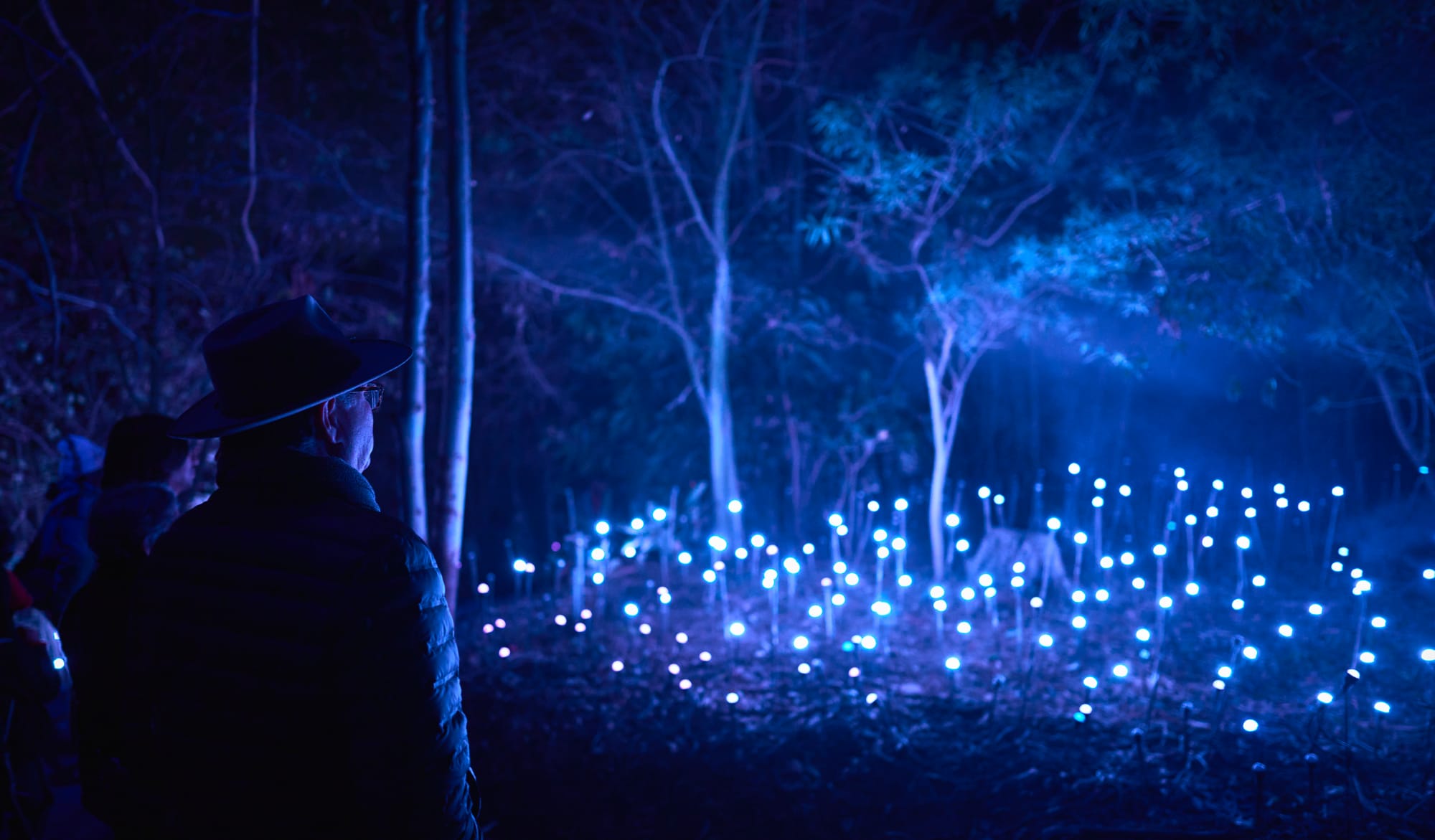
Behind the scenes, the magic that allows this to happen is that Moment Factory is creating with cutting edge technologies, around the world, in a huge spectrum of installation sites. So when a new piece of tech is developed or utilized in an airport, the team might also be thinking how it could be used to augment a tree in a forest. When their show control is being fine tuned to accommodate the demands of a global concert tour, improvements are being made to the same in-house platform that will allow them to address issues at an Astra Lumina installation.
Thomas detailed, “We actually control the show from Montreal. All the Lumina shows are controlled from there so if there's a problem we can manage it remotely. The master show control gives us an opportunity because the Astra Lumina is now code, so we can install very fast. Everything is already integrated, it just needs adjustment, which means we are very agile and flexible.”
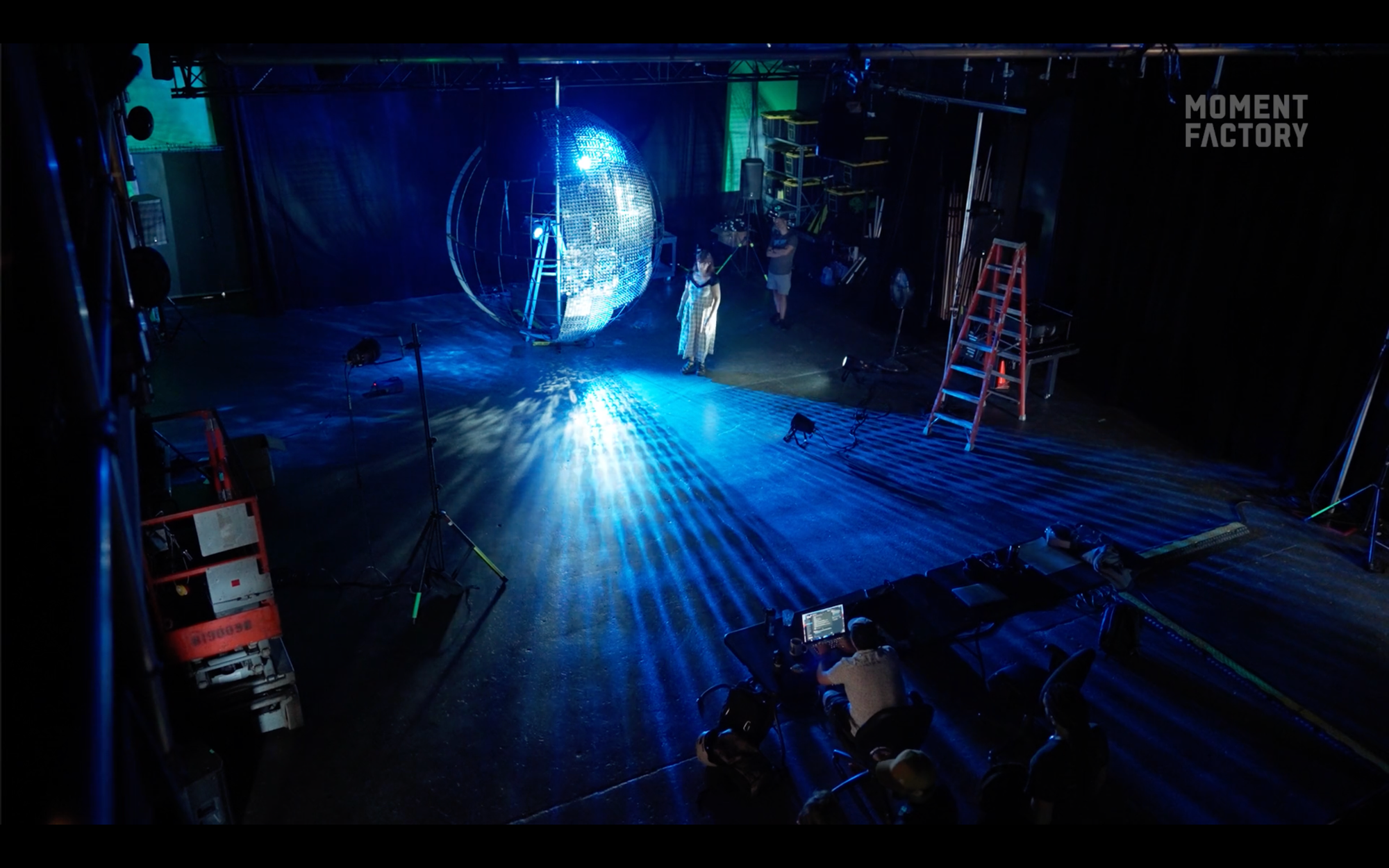
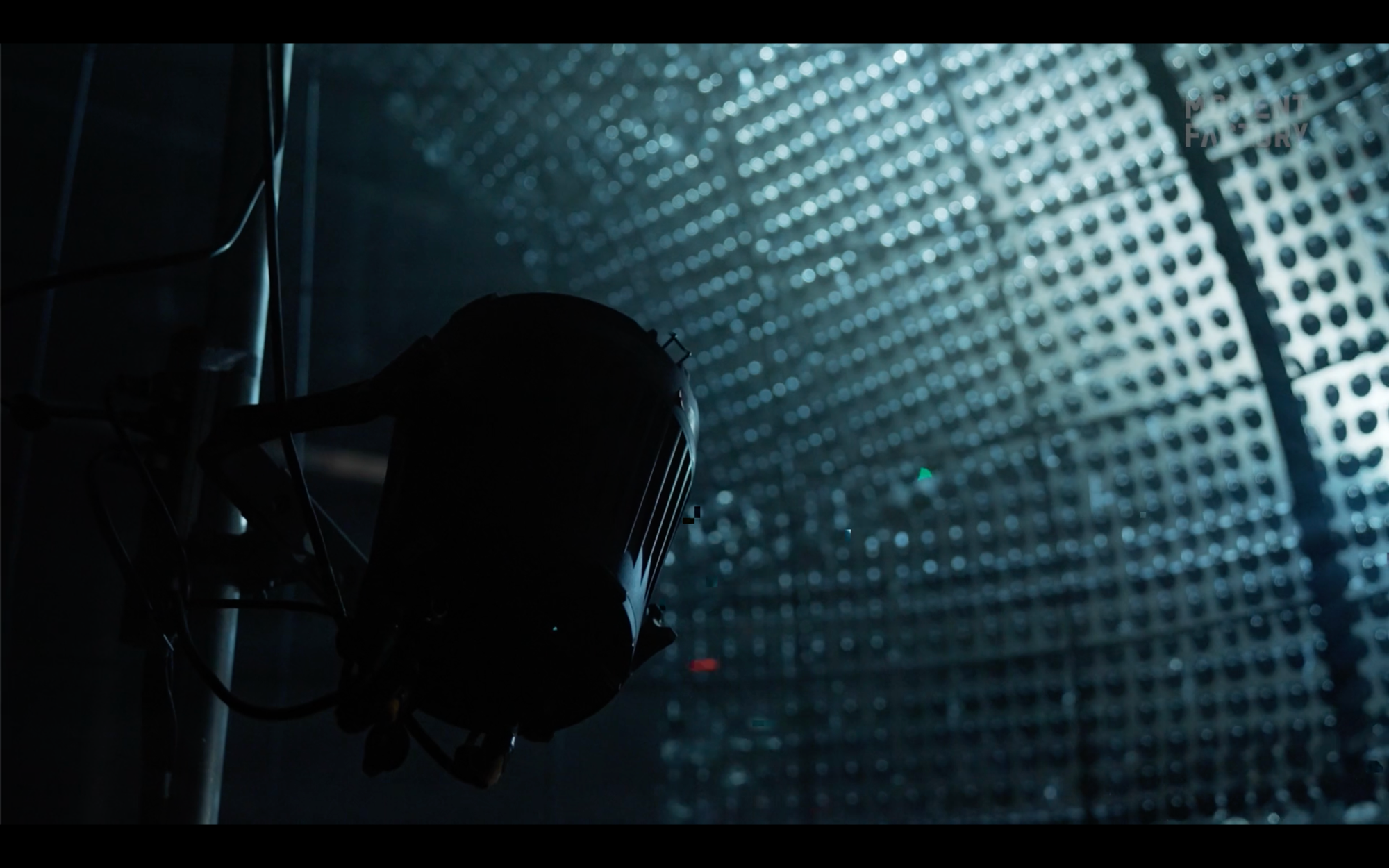
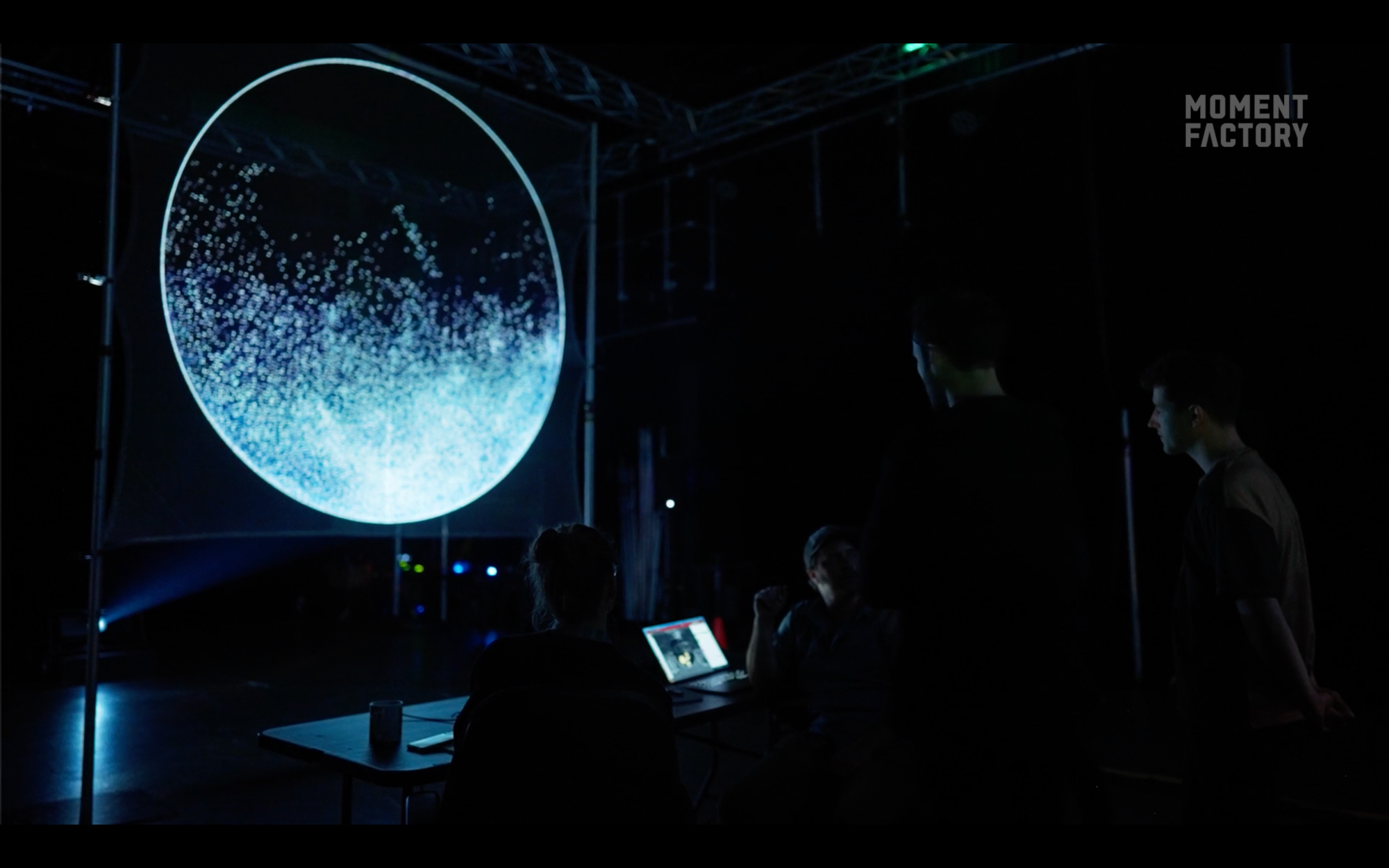
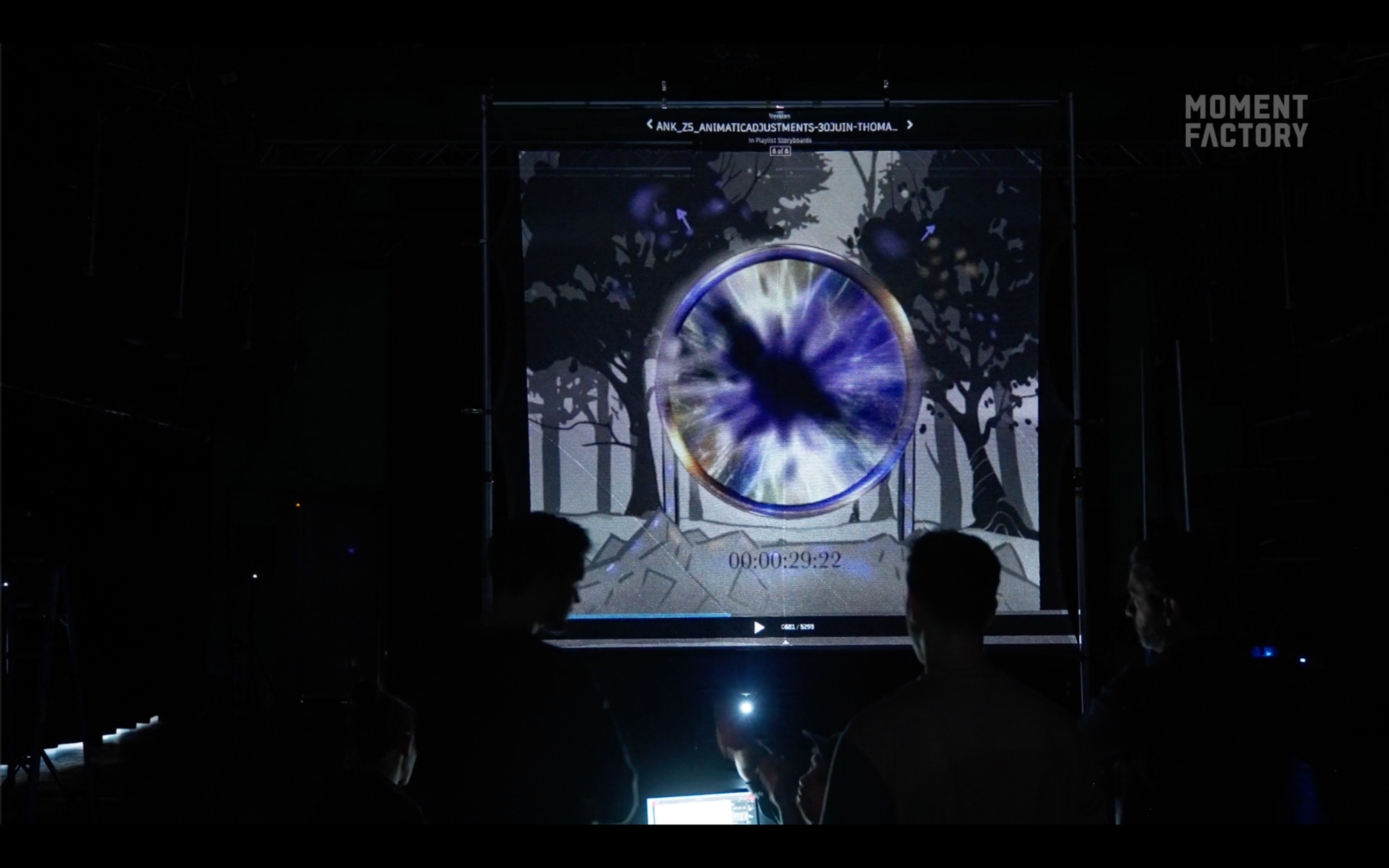
Approximately 100 people, including all Moment Factory team members, external suppliers, props builders, musical artists, etc have worked on this project. They maintain four people full time across the various installations, and each installation requires about twelve people on site, in addition to temporary guides, vendors, etc.
We want people to gather in public spaces, and connect with others.
Thomas elaborated, “We are in the mindset of having a show that can tour with a minimal team, so to be lean we have to have the right people. We’re looking at hiring amazing lighting, sound, and motion designers that are closer to the markets where we’re going with the show. Then, we don’t have to fly 12 people, which is good for our carbon footprint. We’re viewing this as a bit of a laboratory.”
That care for the environment carries through their approach to each site as all night walks are created with respect for the environment and the surroundings of the site where it’s presented. Multimedia is seamlessly integrated in the surroundings, not only to respect the environment, but also to be as unobtrusive as possible so that day visitors are not bothered by equipment.
When the conversation turned to the convergence of our physical and digital worlds, Thomas unsurprisingly leaned into story, “We have this digital campfire idea that evokes the timeless idea of being together around the fire, telling stories and connecting with others. Everything that we do, we do it in public. That’s our model. We want to bring people outside, away from their screens. We want people to gather in public spaces, and connect with others. ”
